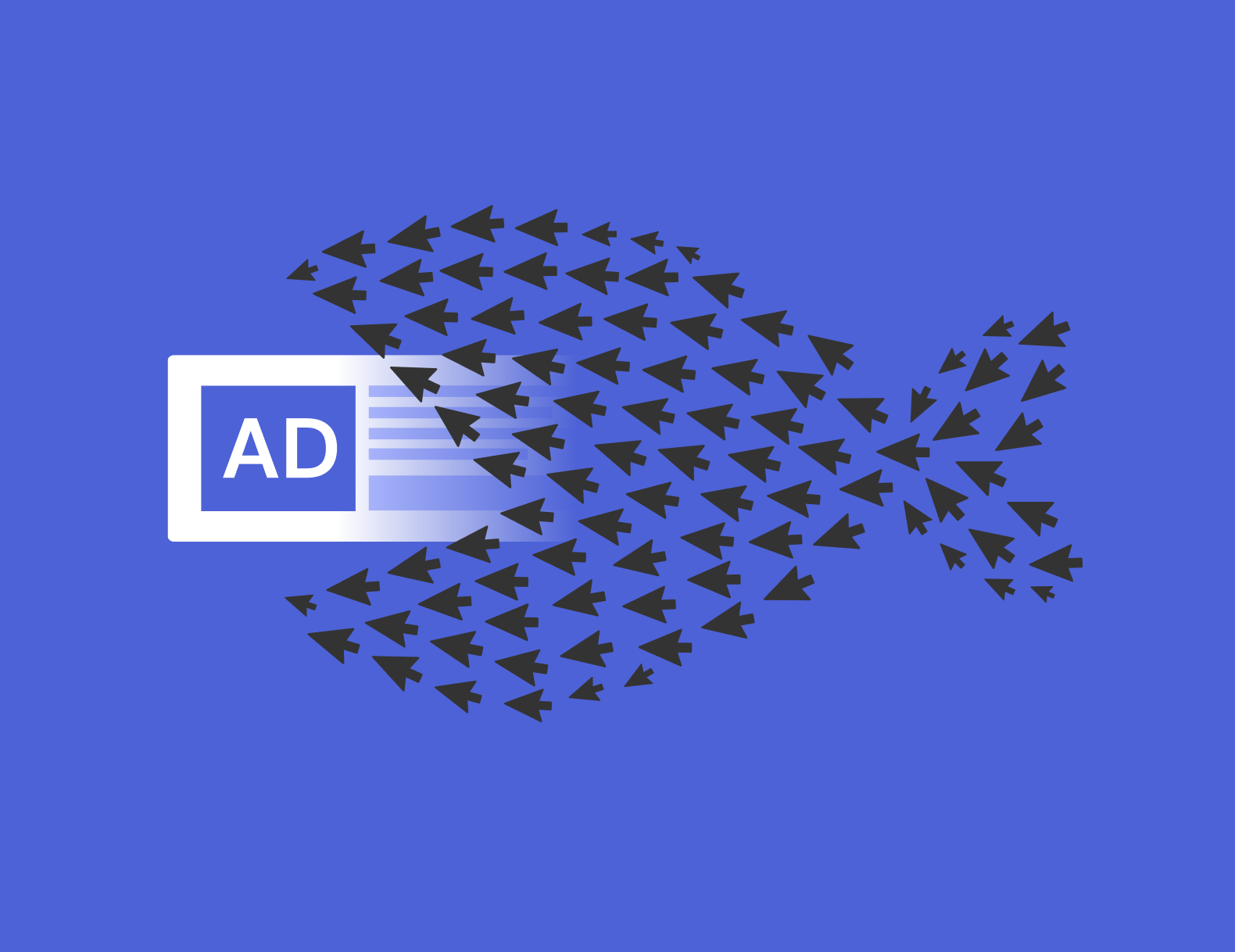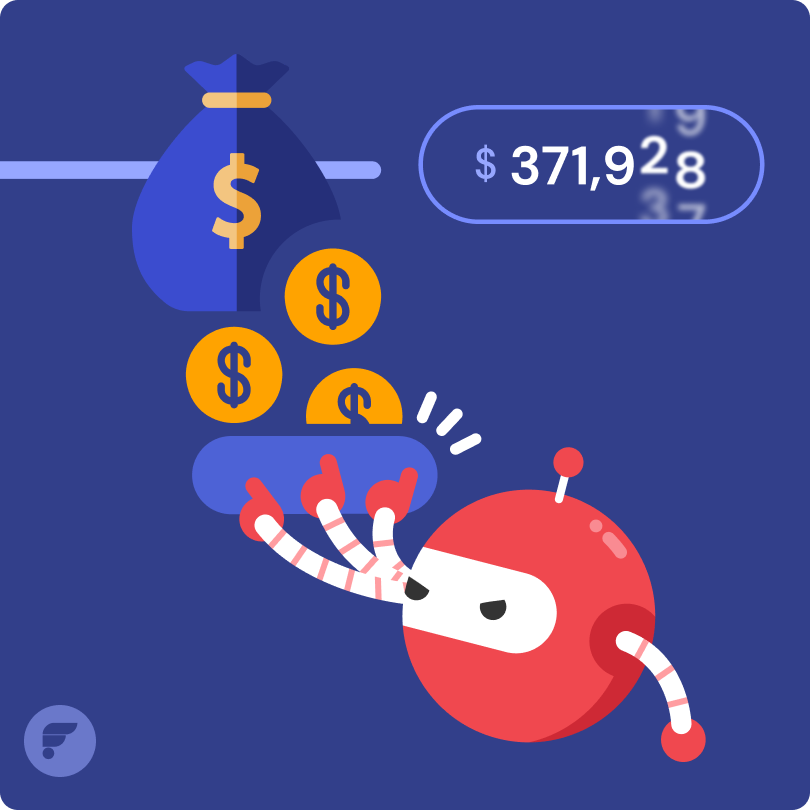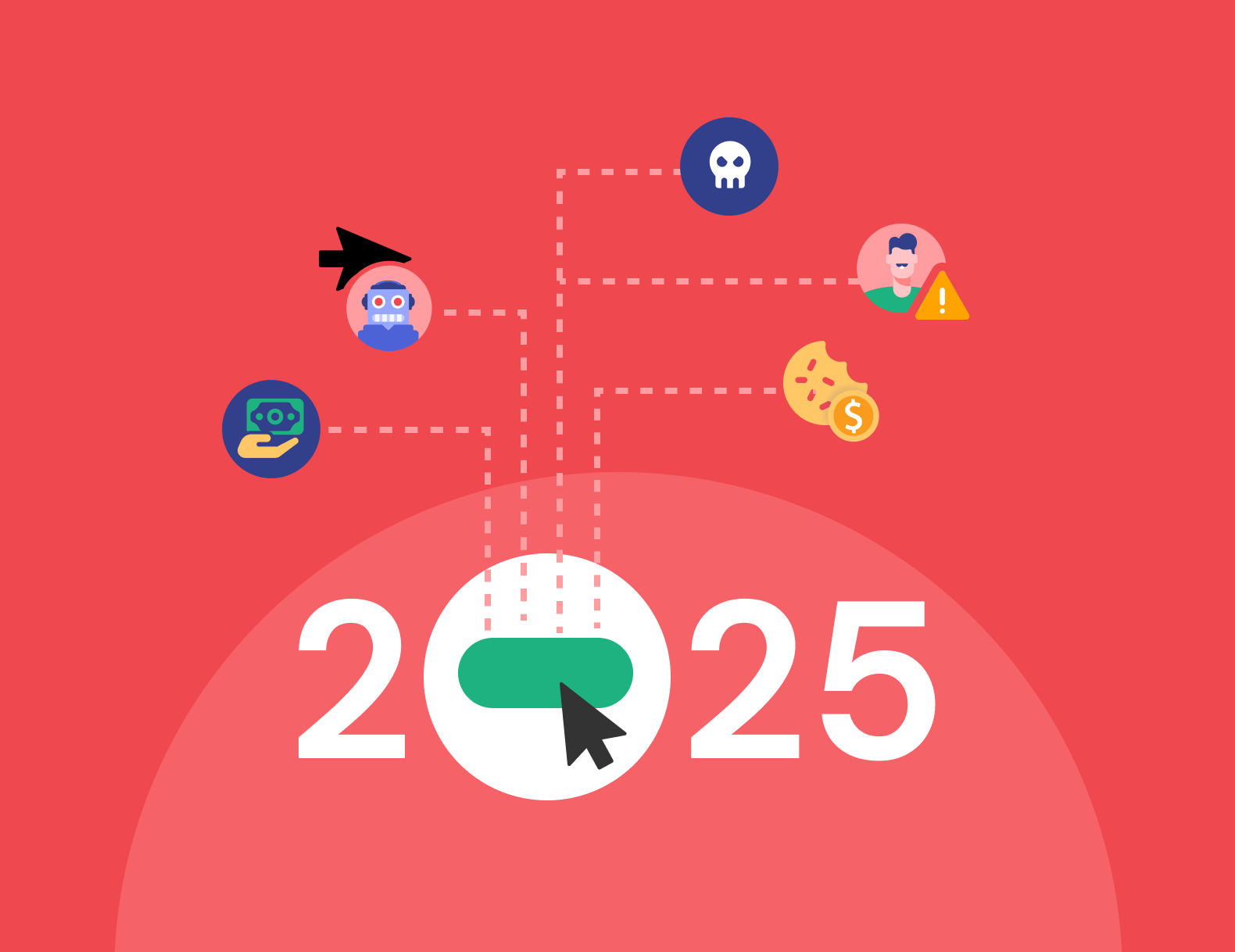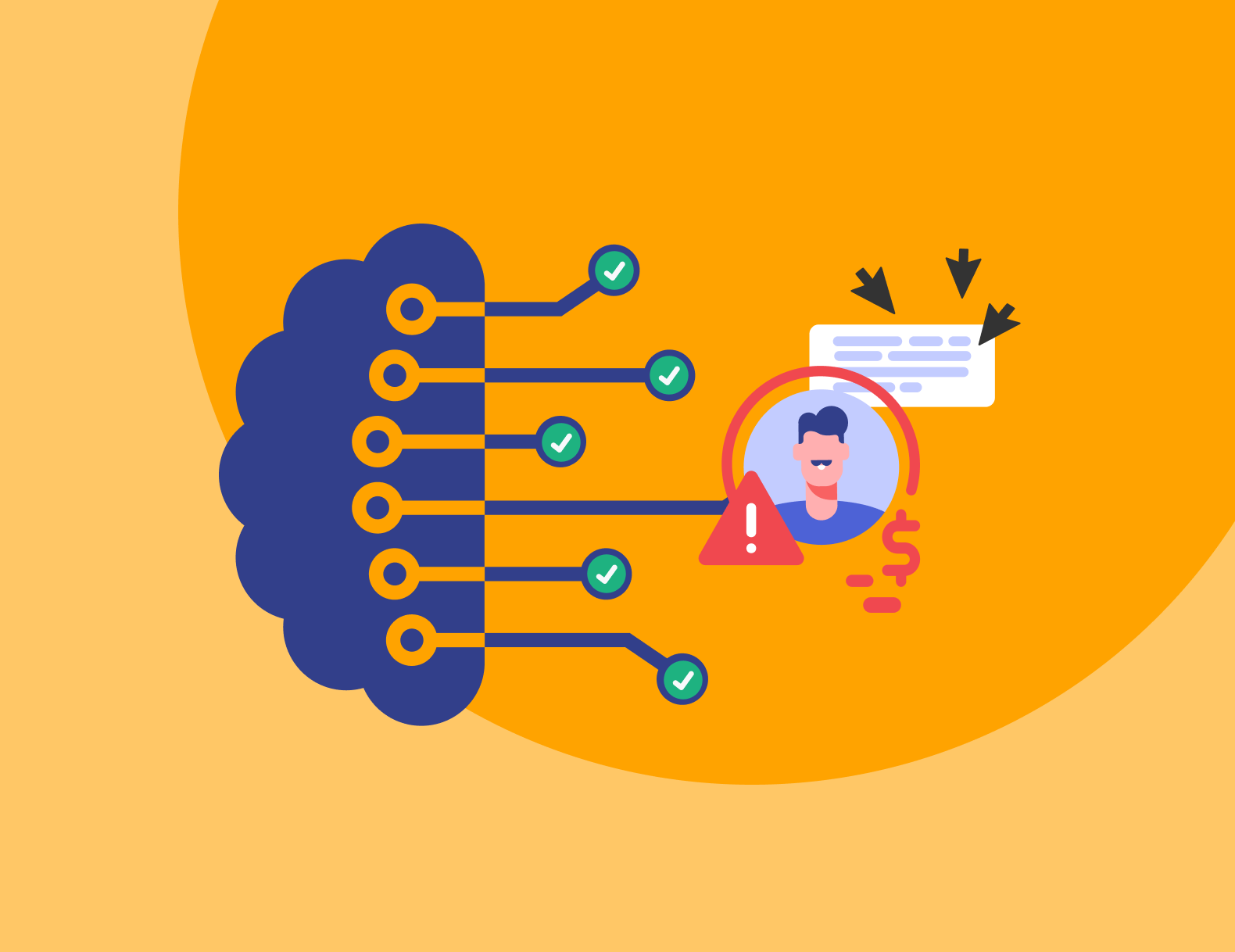Botnet Clicks: How to Identify and Prevent Large-Scale Click Fraud Attacks

Click fraud isn’t always noisy or obvious. Sometimes, it’s silent, distributed, and devastating. That’s the nature of botnet-driven attacks.
Botnet clicks are one of the most dangerous and sophisticated forms of click fraud. Left unchecked, they can quietly torch your budget, corrupt your data, and cripple performance, especially across programmatic, eCommerce, and paid search campaigns.
In this blog, we break down what botnet clicks are, how to spot the warning signs, and what marketers can do to prevent large-scale click fraud using real-time protection.
What Are Botnet Clicks and Why Are They Dangerous?
Botnets are networks of hijacked devices (often called ‘zombie devices’) controlled remotely to carry out coordinated actions such as clicking on your ads.
These clicks aren’t random. They mimic real users with enough sophistication to bypass basic fraud detection filters. They rotate IP addresses, spoof browsers and devices, and blend in with your high-intent audiences.
This makes botnet attacks uniquely dangerous:
- They scale rapidly, often generating thousands of clicks across geographies
- They distort campaign data, masking true performance
They bypass basic filters, draining budgets with alarming efficiency
And unlike isolated bots, botnets operate like a coordinated swarm, just imagine thousands of hijacked devices clicking in sync, torching your budget while pretending to be real users. For marketers, that’s a serious problem.
How Botnet Clicks Impact Your Campaign Performance
1. Inflated CTRs and Misleading Metrics
At first glance, performance looks healthy. CTRs are up, impressions are solid, and your dashboard shows a spike in traffic. But conversions don’t follow. That’s because bots click, but they don’t convert. The result? A bloated click-through rate that masks the lack of meaningful engagement.
2.Wasted Budget with No ROI
Every click from a botnet is budget lost. These clicks never had the intent or even the capability to convert. That means you’re paying to optimise ads that are reaching no one real. For campaigns running on automated bidding or target CPA, this is especially dangerous. If you are keen to see how much budget you’re wasting on invalid traffic? Try our Invalid Traffic Calculator.
3. Long-Term Data Pollution and Attribution Issues
Click fraud isn’t just a one-time cost. Botnets introduce long-term damage by contaminating your analytics and conversion attribution. Machine learning models start making decisions based on fake behaviour. Optimisation strategies are led astray. Over time, this weakens your entire acquisition strategy.
Why Do Bad Actors Use Botnets for Click Fraud?
Behind every botnet attack is a motivation, and it’s not always about stealing data. In the world of digital advertising, botnets are often weaponised for profit, disruption, or competitive sabotage. Here's why:
1. To Drain Competitor Budgets
Clicking on a rival’s ads is one of the oldest dirty tricks in digital marketing. With botnets, this tactic scales. Fraudsters (or even competitors themselves) can deploy a botnet to generate mass clicks on high-value keywords, draining ad budgets quickly and forcing advertisers to pause campaigns or reduce visibility.
2. To Collect Affiliate or Ad Fraud Revenue
Incentivised fraud networks use botnets to simulate user engagement, clicking on ads, filling forms, or mimicking conversions, to trigger affiliate payouts or CPM revenue. These fraud rings thrive on volume and botnets offer the reach they need.
3. To Disrupt or Degrade Campaign Performance
Sometimes, the goal isn’t money, it’s damage. A disgruntled ex-agency, fired affiliate, or even a malicious actor with a grudge can use a botnet to flood campaigns with invalid traffic. The result? Skewed performance data, wasted spend, and internal confusion.
4. To Test or Train Their Malware
Some botnet clicks are a byproduct of malware testing. Bad actors use real advertising campaigns to quietly test the reach and accuracy of their malware distribution or device hijacking techniques. Your campaign may just be collateral damage in a broader play.
5. To Exploit Auto-Bidding Systems
Programmatic platforms and smart bidding strategies often reward what appears to be high engagement. Fraudsters exploit this by using botnets to simulate engagement, causing ad systems to over-bid and further inflate ad costs, often without delivering a single real user.
In short, botnets are a tool and the motivations behind their use vary. What doesn’t change is the outcome: wasted spend, polluted data, and campaign inefficiency.
Signs You’re Under Attack by a Botnet
1. Repeated Clicks from Distributed IPs or Locations
Botnets operate across a web of infected devices, often distributed across countries or regions. If you’re seeing clusters of repeated clicks from unfamiliar IPs or data centres, that’s a red flag. Especially if these IPs are rapidly rotating.
2. Surges in Traffic Outside Business Hours
Legitimate traffic typically follows predictable patterns. If you’re seeing significant spikes in the middle of the night or weekends with no promotional activity or seasonality to explain it, you may be dealing with automated activity.
3. High Bounce Rates with Zero On-Site Activity
Botnets can generate a high volume of initial clicks, but rarely stay on-site. If your campaign is showing high bounce rates combined with session durations of just a few seconds and no user interaction, it’s time to investigate.
Want more red flags to watch out for? Watch our bot detection video for the tell-tale signs, and how can safeguard your online presence with us.
Preventing Botnet Clicks with Proactive Click Fraud Protection
1. TrafficGuard’s Real-Time Click Validation and IP Filtering
Most ad platforms rely on post-click analysis to detect invalid traffic. But by then, the budget is gone. TrafficGuard works in real time, validating every click as it happens. Suspicious patterns like velocity anomalies or mismatched device IDs are filtered before they ever hit your campaign reports.
Through smart IP filtering, TrafficGuard blocks known botnet IPs, mobile app emulators, and data centre proxies before they do damage. And unlike reactive solutions, we don’t just alert, but you’re protected from the first click.
2. Leveraging Threat Intelligence and Blacklist Updates
Botnets evolve. So does our defence. TrafficGuard’s click fraud prevention software draws from a constantly updating threat intelligence database. As new botnets emerge, our global detection models adapt. This ensures your ad stack is armed against both known and emerging threats.
3. Integrating Botnet Protection with Your Ad Stack
TrafficGuard works seamlessly with major platforms like Google Ads and Meta. You don’t need to overhaul your marketing ops to prevent click fraud. By layering proactive protection into your stack, you not only safeguard spend but also improve the quality of data feeding into automated bidding systems, CRM pipelines, and attribution models.
Conclusion: Protecting Your Budget from Botnet-Driven Waste
Botnet clicks don’t click loud but they hit hard. Botnets bleed your budget in silence, distorting performance, and leaving marketers in the dark.
To prevent click fraud at this scale, you need more than alerts. You need defence that acts in real time. Whether you’re managing performance marketing for an eCommerce brand, optimising a PMax campaign, or scaling paid search, investing in click fraud protection is no longer optional.
Need help defending your ad campaigns against botnet fraud? Speak to our team today.
FAQs & Key Takeaways
- How do I know if botnet traffic is affecting my campaigns?
Look for high CTRs with poor conversions, traffic spikes during unusual hours, and bounce rates with no on-site engagement. These are all red flags of bot-driven click fraud, explore our full guide on ways to stop click fraud in your campaigns.
- Why are botnets harder to detect than regular bots?
Because they mimic real user behaviour across thousands of compromised devices such as rotating IPs, spoofing devices, and spreading activity across regions. This makes them stealthier than traditional bots.
- What’s the best way to prevent botnet-driven click fraud?
Use a real-time click fraud prevention platform like TrafficGuard. It identifies threats instantly, blocks them proactively, and helps you regain control of your ad performance.
Get started - it's free
You can set up a TrafficGuard account in minutes, so we’ll be protecting your campaigns before you can say ‘sky-high ROI’.
Subscribe
Subscribe now to get all the latest news and insights on digital advertising, machine learning and ad fraud.








